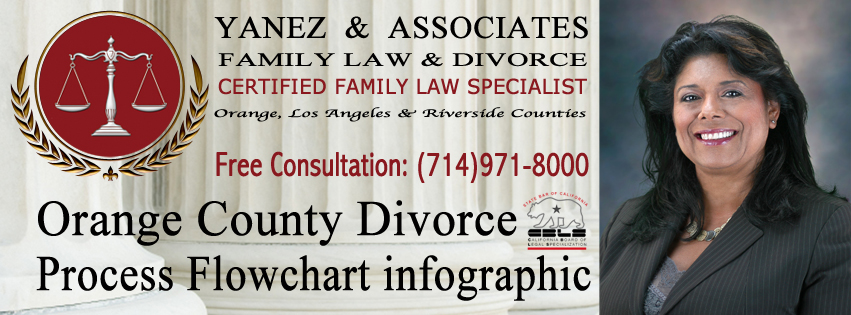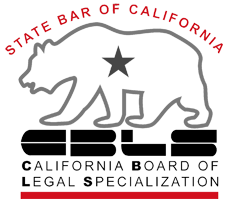The Divorce Process in Orange County California, step by step
The anatomy of a divorce in the OC
Step 1: The first step in a divorce case is to contact a divorce attorney. Whether you’re considering divorce, you’re sure you’re ready for a divorce, or you have been served with divorce papers, an attorney will understand how to get you through the divorce process and work with you to ensure the best results for your family situation.
Step 2: The petitioner must determine how he or she wants to end the marriage: divorce, legal separation, or divorce. If he or she chooses a divorce, it must be determined whether the couple qualifies for a summary dissolution.
Victims of domestic violence should discuss the situation with a domestic violence counselor, and may need to take special steps to initiate the divorce process.
Step 3: Obtain and fill out all of the appropriate forms. A skilled divorce attorney can help the petitioner determine whether there are any special procedures or forms required locally, and where to file the divorce. In the OC, the petitioner must file the following:
• A Petition for Dissolution - This form establishes the divorce proceedings;
• A Summons
• A Declaration Under Uniform Child Custody Jurisdiction and Enforcement Act - This is only necessary if you have children with your spouse or partner.
Learn the steps via our Orange County Divorce Process Flowchart infographic
Step 4: Once papers are filled out completely and appropriately, they need to be filed with the clerk. There is a filing fee to do so, and if you cannot afford the fees, you can apply for a fee waiver.
Step 5: The other party to the divorce, called the respondent, has the right to be notified of the legal action.
The petitioner must have the respondent served with divorce papers by an adult, 18 or older, who is not involved in the case. This is called service of process. If the petitioner does not have a way to serve the papers, they may hire a process server to do so.
Divorce papers include those listed in Step 3, as well as:
- A blank Response - Marriage form, and
- A Proof of Service of Summons.
Once the papers have been served, a proof of service needs to be filed with the court by the petitioner or the process server.
Step 6: Once served with divorce papers, the respondent can decide how he or she wants to respond. The respondent can choose to file a response with the Court within 30 days, work out an agreement outside of the court with the petitioner, or do nothing.
Step 6A: If the respondent chooses to file a response, he or she must complete steps three through six with the appropriate papers within 30 days. The selecting of papers, filling out, filing and serving may require the assistance of an attorney. Once the response papers have been served to the petitioner, the process will move to Step 7.
Step 6B: If the respondent and the petitioner choose to work out their differences outside of court, they may hire a mediator, choose to go through the process of collaborative law, or choose not to divorce. Only the petitioner can choose not to go through with a divorce once paperwork has been filed. If the terms of the divorce are determined outside of court, the process moves to Step 9.
Step 6C: If the respondent chooses to do nothing, the petitioner should file a Request for Default.
If the two parties have not agreed upon the terms of their divorce settlement at this point, the petitioner can submit a Default Judgment for Court Approval.
If the respondent does not reply to the Court, but has made an agreement with the petitioner outside of Court, the proposed judgment is submitted to the judge for approval. The divorce cannot be finalized for a minimum of six months, but this is the final step if no response is received.
Step 7: During the Preliminary Declaration of Disclosure, both parties will exchange financial documents that list debts and assets. This allows the each party to come up with a potential property division agreement. This takes place within 60 days of Step 4. To do so, the petitioner must file and serve the following forms:
• Declaration of Disclosure
• Schedule of Assets & Debts or a Property Declaration, and
• Income & Expense Declaration
When served, the respondent files a Declaration Regarding Service. However, the petitioner can complete the divorce without a response from the respondent.
Step 8: In order to divorce, the couple must have legal terms regarding the division of debts and property, spousal support, child custody, child visitation, child support, and potentially, other issues. The couple has several choices in determining the terms of the divorce agreement.
Step 8A: Mediation, a form of alternative dispute resolution, entails the two spouses and a neutral third party mediator meeting and determining the terms of their own divorce. If any part of the divorce cannot be agreed upon in mediation, the couple can go to court and have a judge determine the leftover issues.
Step 8B: Collaborative divorce, another form of alternative dispute resolution, involves the two parties meeting with specially trained collaborative law attorneys to determine the terms of the divorce agreement.
Step 8C: If the couple cannot agree on the terms of the divorce, they may need to go in front of a judge and allow the court to determine the terms of the divorce. In Orange County, this means filing a request for a trial date and attending a mandatory settlement conference. The length of time that the divorce takes can depend on the factors involved in the divorce.
Step 9: Whether the terms of the divorce agreement were set in mediation, a collaborative divorce, in court, or on their own, a divorce cannot be finalized without a getting a divorce judgment. The final judgment must be signed by a judge, and can include the following orders:
• Child Custody and Visitation Order
• Child Support Order
• Spousal, Partner or Family Support Order
• Property Division Order
• A Notice of Rights & Responsibilities
• Notice of Entry Judgment
A divorce judgment cannot be issued for at least six months after Step 4, the initial filing of divorce papers.
*** Note to the client*** Rather than a vertical infographic, there is potential here for info to branch off to the sides, for example, if a couple is involved in domestic violence, if a petitioner wants to know whether they qualify for an annulment or a summary dissolution, the differences between a divorce and a legal separation, or the different options for responding to court papers.
Additional information on the divorce residency requirements in Orange County CA.










